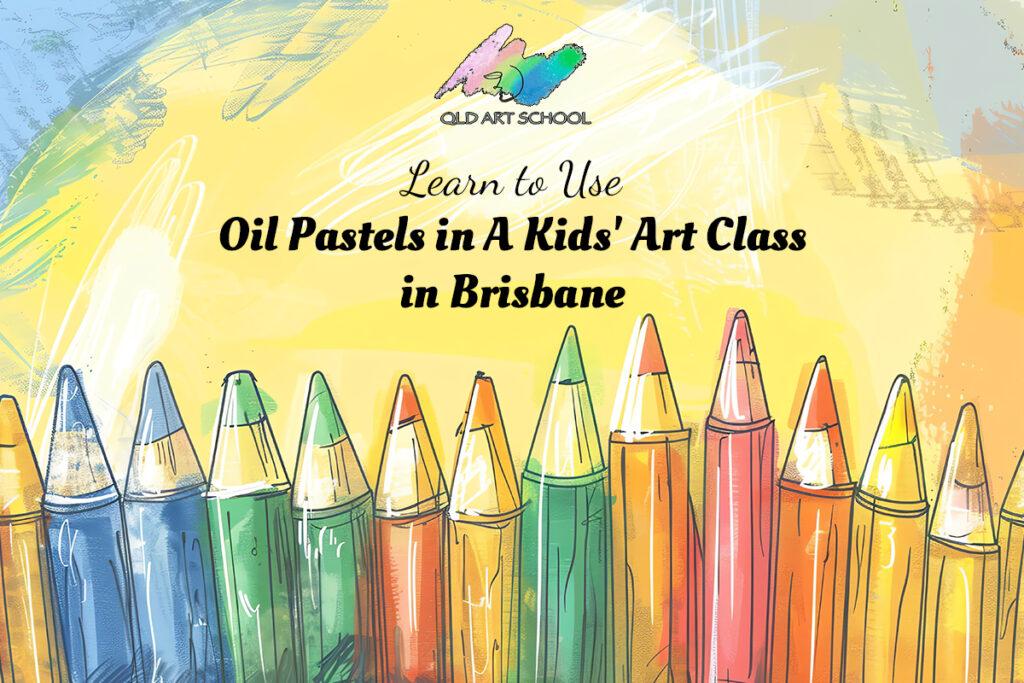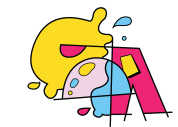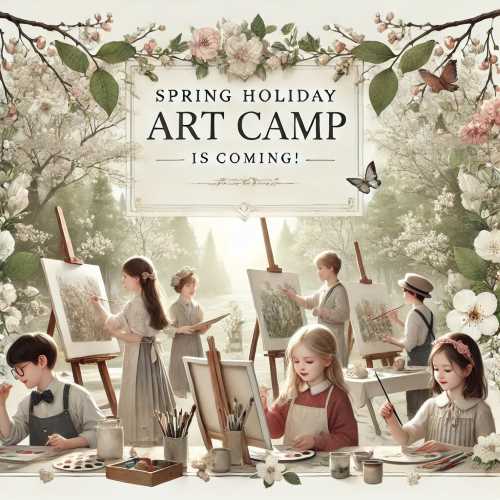
The invention of the oil pastel is attributed to the Japanese company Sakura in the year 1925. Called Cray-Pas, these little sticks of pigment, oil, and wax were meant to be used as an alternative to the prevalent wax crayons. But that’s not how they became as popular and widespread as they are today. In 1949, the famous artist Pablo Picasso’s friend Henri Goetz requested artist materials manufacturer Henri Sennelier to develop a medium for Picasso that could be used on all surfaces without cracking or fading. Sennelier created the now-famous Sennelier oil pastels for the artist, consequently propelling this medium into the limelight.
While oil pastels have been traditionally viewed as the stepping stone to watercolour paintings or acrylic paintings, they are actually quite a valuable medium to explore by themselves. They provide a lot of scope for expression and creativity which makes it the perfect medium for children to start with at our kids’ art class in Brisbane.
If you want your little one to learn how to use colour and develop in creating more realistic pictures, our kids’ art classes in Brisbane will start them off with oil pastels, the simplest, and cleanest way to learn about values in art before they progress into something more suitable for them. In this blog, we share how to set about using oil pastels as a beginner. Even expert artists may learn something valuable from this!
What Sort of Paper is Useful for Oil Pastel Artwork?
When choosing paper for oil pastels, it’s important to select something sturdy and thick due to the heaviness of the medium. Avoid lighter papers like sketch or drawing paper, which are less durable. Instead, opt for mixed media paper or another heavyweight option, ideally 80lb or above.
Texture is another key factor. Paper with a bit of tooth, or texture, is often preferred for oil pastels as it helps the medium grip better. Smooth paper can be used, depending on the type of art, but a slight texture usually enhances the result.
Additionally, acid-free, archival paper is recommended to preserve the longevity of your artwork. This type of paper resists yellowing and deterioration over time, ensuring the colors stay vibrant and the artwork doesn’t fade.
Which Brand of Oil Pastels Is Worth Buying?
When deciding which oil pastel brand is worth buying, it depends on your needs, whether you’re teaching students or creating professional artwork, and your budget. Student-grade oil pastels, like Crayola Water-Soluble Portfolio Series or Pentel, tend to have more wax, making them more affordable but less blendable. They’re great for classroom use or beginners.
On the other hand, artist-grade brands like Holbein, Sennelier, and Mungyo offer higher quality with better blending and surface coverage, ideal for professional or advanced artists who prioritize performance. Sennelier, in particular, is known for its superior softness and rich pigments.
Techniques Used In Oil Pastels
Blending
Oil pastels blend easily. All you need to do is use your finger, a tissue, a blender or a cotton stick to blend the colours into each other. Whether creating sunsets or sceneries, blending the colours in creates a uniform, sleek finish rather than a harsh one.
Watercolour effects
You can use oil pastels to create a watercolour painting effect. Put some colour down on paper and then use a Taklon brush with water to apply a wet wash on dry paper to activate the pastel colour. This creates a vibrant, deep finish.
Glazing
Use the same technique as explained above. Only this time use linseed oil or turpentine as the wet medium to create a glaze effect on the paper.
Sgraffito
To create sgraffito, start by laying down bold, bright colours using oil pastels. Next, apply a darker pastel colour, like black, over the top layer. Finally, use a sharp tool, like a toothpick or fork, to gently scratch away the top layer, revealing the vibrant colours beneath.
Scumbling
Scumbling is a technique that shows off movement effectively. Apply loose circular strokes to an underlying darker colour. First, apply a really thick coat of dark colour, and then use a lighter shade to scumble on top of the darker shade.
Using Mask Tape For Straight Edges
Use masking tape to protect the edges of your artwork and proceed to create the work as you normally would or as is being taught at our art painting class in Brisbane. Once the work is done, remove the masking tape for straight edges.
Flat Edge for Texture
Oil pastels are excellent for creating texture, but if you want more precision or bolder strokes, try using the flat edge technique. Simply hold the oil pastel vertically, apply pressure, and lift it off the paper. This will leave a broad, flat mark.
Wrapping Up
Oil pastels are a fun and creative tool for kids to explore in art classes. They are easy to use and allow children to express themselves with vibrant colours and unique textures. Whether they are blending colours or using techniques like the flat edge method, oil pastels help kids enjoyably develop their artistic skills.
If you’re looking for a great activity for your child, consider enrolling them in kids’ art classes in Brisbane. These classes provide a fun, supportive environment where children can learn new techniques, experiment with different materials, and broaden their creativity. Oil pastels are just one of the many exciting tools they’ll get to explore.



